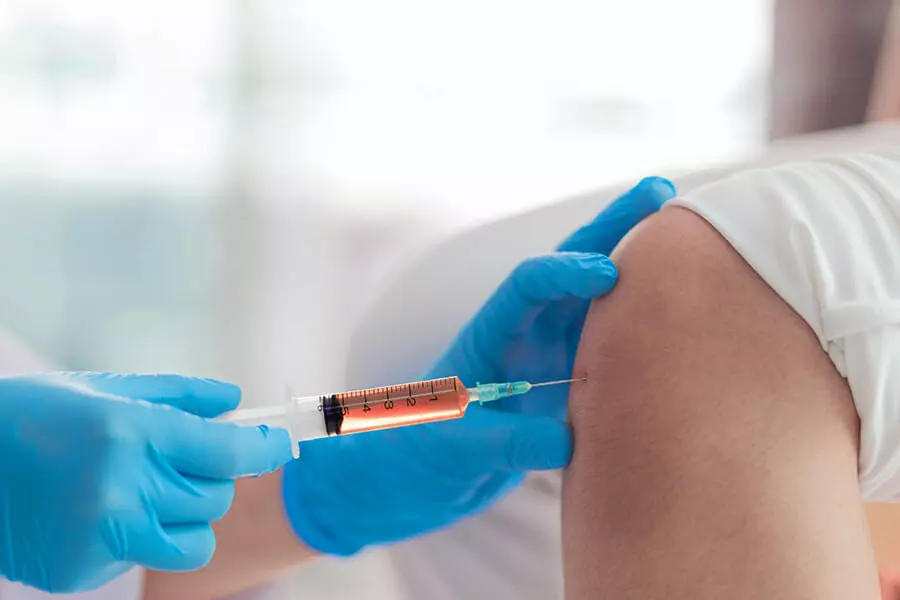
Platelets are small, colourless, disk-shaped cell fragments lacking a nucleus that are found in blood. They play an imperative role in clot formation and also have antimicrobial properties important in infection control. However, the platelets in platelet rich plasma (PRP) are imperative in establishing an inflammatory and healing response in damaged tissue by releasing numerous growths factors and cytokines to stimulate the body’s own healing process. These growth factors orchestrate the key biological processes required for healing. They have been shown to orchestrate to be an important element in healing processes, including angiogenesis, inflammation resolution and tissue regeneration.
Treatment method
Platelet-Rich Plasma (PRP) therapy
Platelet-Rich Plasma (PRP) therapy is a medical procedure that entails the collection of a small blood sample from the patient. This blood sample is then subjected to a specialized processing technique that isolates and concentrates platelets, growth factors, and various bioactive components. Subsequently, the resulting PRP is carefully administered through injections directly into the injured or affected area. This therapeutic approach capitalizes on the body's innate healing abilities, as the concentrated PRP promotes accelerated tissue repair and regeneration. PRP therapy has gained widespread recognition for its efficacy in addressing a variety of musculoskeletal conditions, including osteoarthritis, tendonitis, and ligament injuries. It offers patients a minimally invasive treatment option that holds the promise of enhanced recovery and relief from discomfort.
Stem Cell Therapy
Stem cell therapy is an innovative medical procedure centered around the utilization of a patient's own stem cells or donor stem cells. This approach is designed to facilitate the repair of damaged tissues and encourage the regeneration of impaired cellular structures. By harnessing the regenerative potential of stem cells, this therapy offers promising avenues for the treatment of various conditions, including osteoarthritis, cartilage defects, and tendon injuries. Stem cell therapy is at the forefront of medical research, holding the potential to revolutionize the way we address degenerative and traumatic musculoskeletal disorders and injuries.
Surgery
Arthroscopy
Arthroscopy is a minimally invasive surgical technique that employs a small camera and specialized instruments inserted through tiny incisions to diagnose and treat joint-related issues. Commonly used for both diagnosis and treatment of joint conditions, it offers the advantage of reduced scarring and quicker recovery times. During arthroscopy, doctors may also incorporate the use of PRP or orthobiologics by injecting these regenerative substances directly into the affected joint. This combination approach enhances the healing process, promoting tissue repair and improving the overall outcomes for patients with joint-related ailments.
Open surgery
Open surgery becomes necessary in severe cases where extensive repair or reconstruction of damaged tissues is essential. In such instances, the incorporation of PRP or orthobiologics alongside the surgical procedure proves advantageous. This combined approach expedites the healing process and contributes to enhanced surgical outcomes, particularly in cases characterized by significant ligament or tendon injuries. The utilization of regenerative substances complements the surgical intervention, fostering a more effective and expedited recovery for patients with complex musculoskeletal conditions.